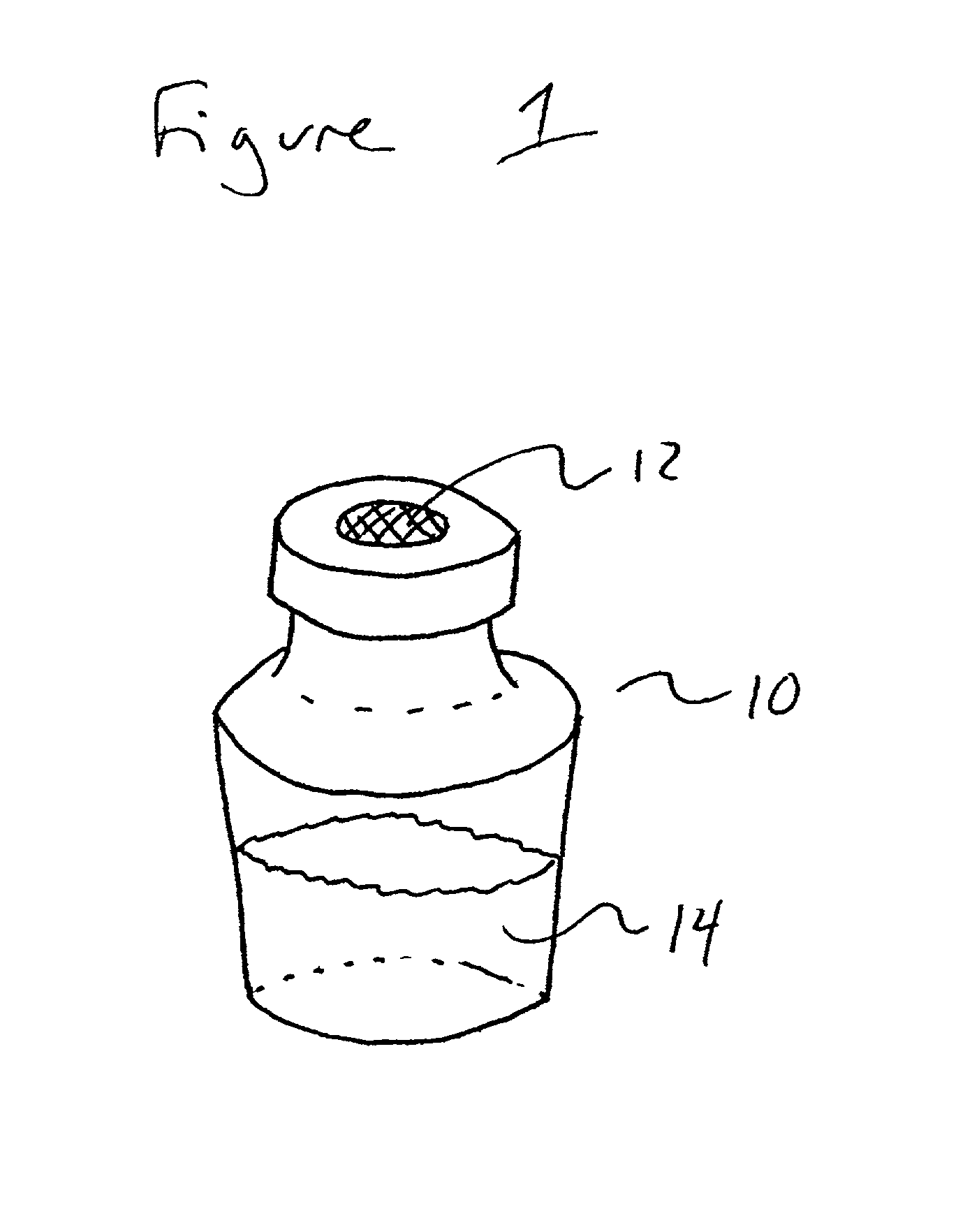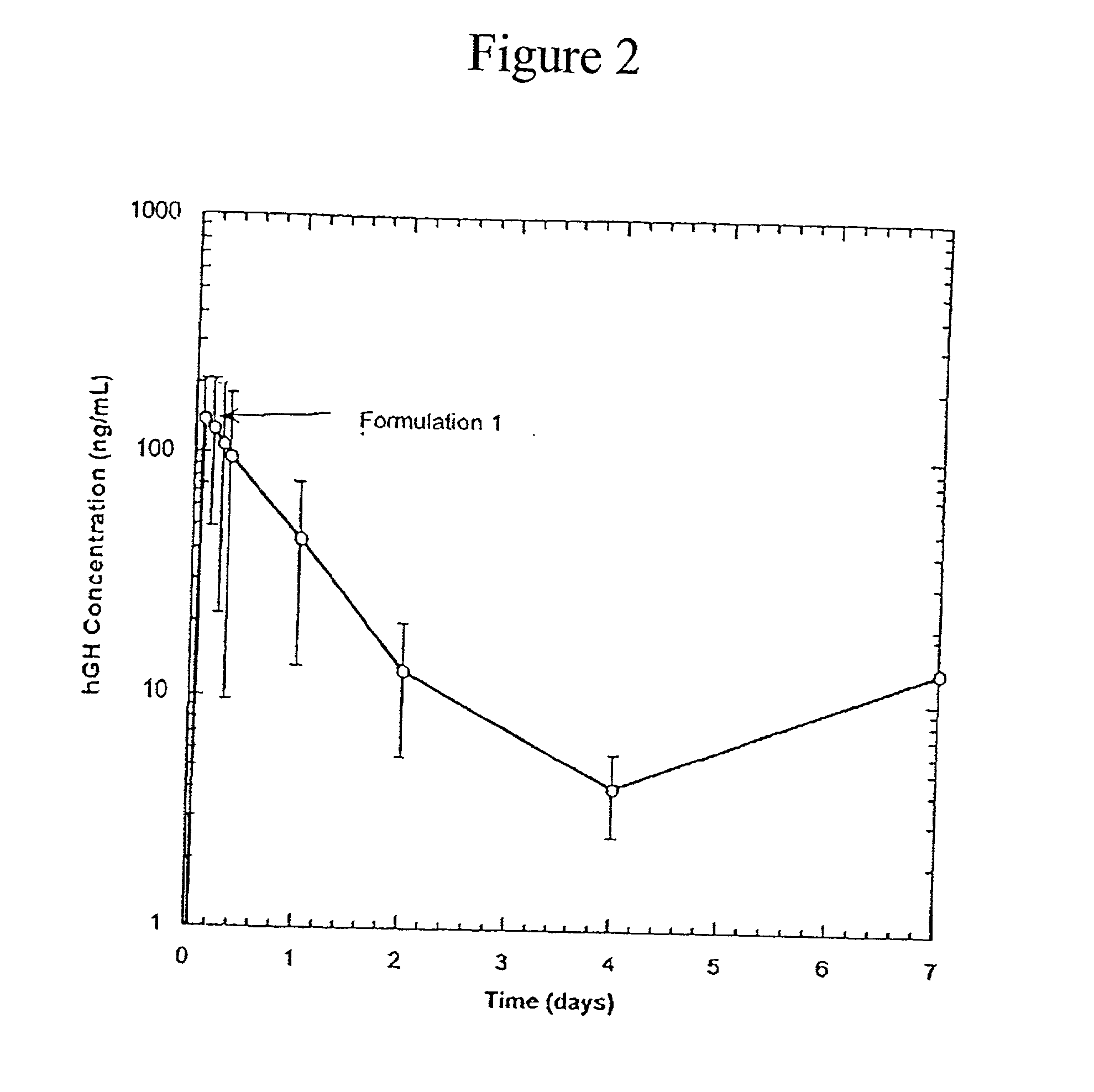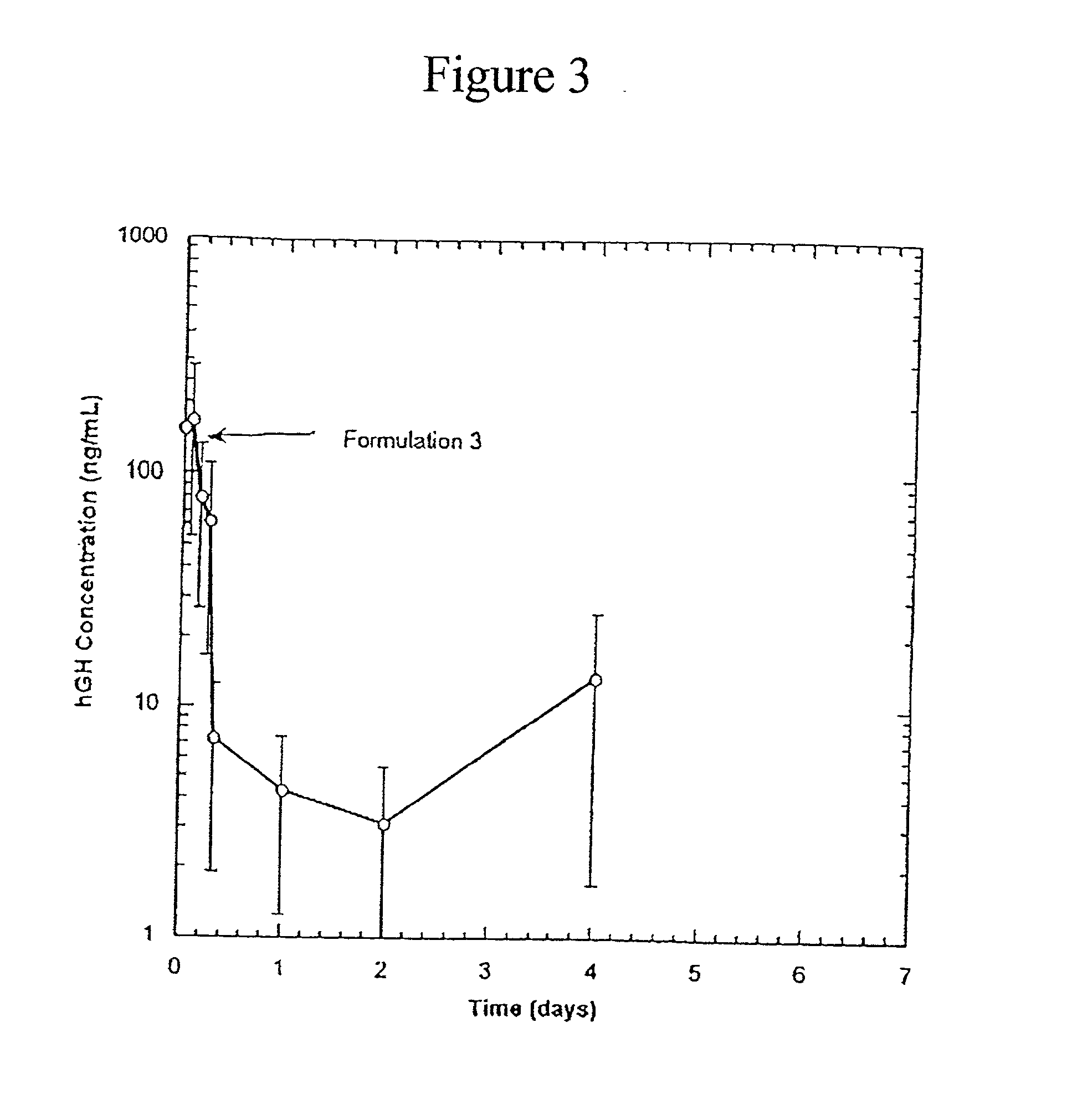Erodible polymers for injection
a technology of erodible polymers and beneficial agents, which is applied in the direction of emulsion delivery, pharmaceutical delivery mechanism, prosthesis, etc., can solve the problems of inability to perform an incision in the patient, release of a substantial portion of beneficial agent, and inability to achieve burst effect and/or lag tim
- Summary
- Abstract
- Description
- Claims
- Application Information
AI Technical Summary
Benefits of technology
Problems solved by technology
Method used
Image
Examples
examples 1-5
[0051] In these examples, compositions containing protein were prepared such that they could be easily administered by injection, yet would provide for a gradual, controlled release of the protein. Release behaviors (release profile) of rhGH (GENENTECH, S. San Francicso, Calif.) from the compositions were studied both in vivo and in vitro by measuring the amount of protein released as a function of time. The stability of the protein was determined by measuring the percentage of the released protein which had not aggregated. A higher percentage of non-aggregated protein indicated better stability.
[0052] Poly(L-lactic acid) (PLA) was obtained from BOEHRINGER INGELHEIM, Ridgefield, Conn., as RESOMER 202H, with a reported molecular weight of 12,000 daltons. Polymer solutions were prepared by mixing the benzyl alcohol and benzyl benzoate to form a homogenous mixture. PLA was then added to this mixture and was dissolved by gentle mixing with a vortex mixer. The rhGH was complexed with zin...
example 6
[0058] In this example, an injectable composition for controlled release of a protein was prepared. Release profiles of the protein from the composition were studied both in vivo and in vitro by measuring the amount of protein released as a function of time.
[0059] An aqueous protein solution was prepared by mixing VEGF (10 mg / ml), sucrose (10 mg / ml), 0.03% POLYSORBATE 80, and histidine (10 mM). The solution had a pH of 6.0. This protein solution was sprayed into liquid nitrogen using an ultrasonic nebulizer, as described in U.S. Pat. No. 5,019,400. The resulting frozen protein droplets were then lyophilized to produce particles having a diameter of 2-10 .mu.m. The protein powder was mixed into a polymer solution composed of 30 wt % PLA, 69 wt % benzyl benzoate, and 1 wt % benzyl alcohol. The mixture was made by homogenization at 8,000 rpm for 2 minutes. The resulting mixture contained 12 mg protein per milliliter of liquid.
[0060] For in vitro release studies, 100 microliter (.mu.l) ...
PUM
| Property | Measurement | Unit |
|---|---|---|
| Fraction | aaaaa | aaaaa |
| Time | aaaaa | aaaaa |
| Concentration | aaaaa | aaaaa |
Abstract
Description
Claims
Application Information
 Login to View More
Login to View More - R&D
- Intellectual Property
- Life Sciences
- Materials
- Tech Scout
- Unparalleled Data Quality
- Higher Quality Content
- 60% Fewer Hallucinations
Browse by: Latest US Patents, China's latest patents, Technical Efficacy Thesaurus, Application Domain, Technology Topic, Popular Technical Reports.
© 2025 PatSnap. All rights reserved.Legal|Privacy policy|Modern Slavery Act Transparency Statement|Sitemap|About US| Contact US: help@patsnap.com



